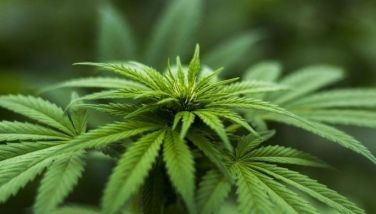Seaweed industry gets boost from Mirant’s solar electrification project
August 23, 2003 | 12:00am
Mindanao’s seaweed industry is expecteed to grow significantly with the availability of electricity in several barangays in the Autonomous Region of Muslim Mindanao (ARMM). Wee Lee Hiong, former president of the Seaweed Industry Association of the Philippines (SIAP) and president of Rico Phils., one of the largest pro-cessors of seaweed in the country, says the completed electrification of 35 barangays is "a significant boost" to the Mindanao seaweed industry.
The electrification of the 35 barangays was made possible through the Alliance for Mindanao Off-grid Renewable Energy (Project AMORE), a partnership between Mirant Philippines, the Department of Energy, the United States Agency for International Development (USAID), Winrock International and the ARMM government. Mirant Phils., the largest private producer of energy in the country provided the funding for the solar panels in the 35 barangays while USAID conducted community training on how to educate residents on the proper use of solar energy.
Wee says the availability of power will augur well for the seaweed industry as it will make possible the use of solar dryers, support seedling banks and quality testing procedures which are necessary for the further development of Mindanao’s seaweed industry.
Without electricity, Wee says, this would not have been possible. The province of Tawi-tawi produces approximately 400,000 tons of seaweed a year, representing 80 percent of the country’s total output.
The seaweed industry was cited recently by President Arroyo for its potential in bringing in revenues for the country and providing livelihood and income opportunities to Filipinos. A certain species of seaweed, the euchema cotoni, is farmed in Mindanao and in other parts of the country. It is processed into a powdered form (carageenan) and is exported to different parts of the world for use as a thickener in various consumer products such as food, dairy, toothpaste among others.
The electrification of the 35 barangays was made possible through the Alliance for Mindanao Off-grid Renewable Energy (Project AMORE), a partnership between Mirant Philippines, the Department of Energy, the United States Agency for International Development (USAID), Winrock International and the ARMM government. Mirant Phils., the largest private producer of energy in the country provided the funding for the solar panels in the 35 barangays while USAID conducted community training on how to educate residents on the proper use of solar energy.
Wee says the availability of power will augur well for the seaweed industry as it will make possible the use of solar dryers, support seedling banks and quality testing procedures which are necessary for the further development of Mindanao’s seaweed industry.
Without electricity, Wee says, this would not have been possible. The province of Tawi-tawi produces approximately 400,000 tons of seaweed a year, representing 80 percent of the country’s total output.
The seaweed industry was cited recently by President Arroyo for its potential in bringing in revenues for the country and providing livelihood and income opportunities to Filipinos. A certain species of seaweed, the euchema cotoni, is farmed in Mindanao and in other parts of the country. It is processed into a powdered form (carageenan) and is exported to different parts of the world for use as a thickener in various consumer products such as food, dairy, toothpaste among others.
BrandSpace Articles
<
>
- Latest
Latest
Latest
April 10, 2024 - 5:12pm
By Ian Laqui | April 10, 2024 - 5:12pm
March 4, 2024 - 3:32pm
By Ian Laqui | March 4, 2024 - 3:32pm
March 4, 2024 - 2:12pm
By Kristine Daguno-Bersamina | March 4, 2024 - 2:12pm
February 17, 2024 - 2:31pm
February 17, 2024 - 2:31pm
February 13, 2024 - 7:24pm
By Gaea Katreena Cabico | February 13, 2024 - 7:24pm
Recommended
January 10, 2025 - 12:00am


























